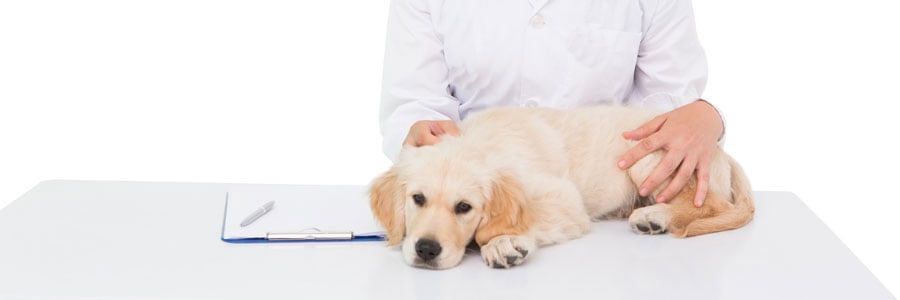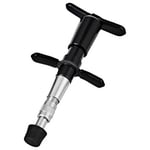
Intermountain Pet Hospital is now offering veterinary orthopedic manipulation(VOM), commonly referred to as pet chiropractic care. This is a healing technology that assists a pet's nervous system in re-establishing neuronal communication to encourage full healing where other medical practices may not be able to heal fully. Dr. "Toby" Bingham is a successful human chiropractor and has two practices in Boise and Meridian, and is now is extending his skills to provide this specialized care to your pet.
Dr. Toby uses a hand-held device that fixes the spinal misalignment and re-establishes nerve communication. VOM helps to release the tightened muscles surrounding the spinal subluxation. Dogs that once were struggling to walk or have had difficulty moving and don't respond well to traditional care now have an alternate option.
Here are some of the more common questions about veterinary orthopedic manipulation (a specialized pet chiropractic care method).
Veterinary Orthopedic Manipulation is a healing technology that locates areas of the animal’s nervous system that has fallen out of communication, and re-establishes neuronal communication and thus induces healing.
VOM is singularly the most simple, effective, and safe healing modality in veterinary care to date. For the VOM practitioner, it is an exquisitely objective, fast, and easy to apply technology that takes a minimum of time to master and whose scope of the application appears has yet to be fully appreciated.
Routinely treated are conditions such as:
No! VOM exists in between veterinary medicine and chiropractic care. It has similarities to some of the chiropractic modalities and functions by restoring function by reducing “subluxations,” as is done in chiropractic care. It uses a hand-held device that is used in a popular human chiropractic technique called “Activator Methods,” but it is not to be confused with that technique. The differences between VOM and Chiropractic care are significant and distinct.
VOM exists in a gray area between both professions (Veterinary and Chiropractic) and benefits from the positive aspects of both, a hybrid, and thus more effective than either by themselves.
VOM is not animal chiropractic care and thus is not taught by the American Veterinary Chiropractic Association (AVCA). VOM is not recognized by the AVCA, (the AVCA does not recognize anything it does not teach).
The American Veterinary Medical Association (AVMA) does not recognize veterinary chiropractic care or the AVCA for now. VOM is formally recognized in Washington State, by the American Holistic Veterinary Medical Association, Association of Pet Dog Trainers, the Maine Veterinary Medical Association, and the German Shepherd Clubs of America, to name a few.
All chiropractic modalities have one thing in common in that they all reduce the vertebral subluxation complex by providing motion or force to the fixated or subluxated joint.
Spinal or Injury = Neuronal Subluxation Syndrome = Pathological Read
Neuronal subluxation + Motion (force) = Subluxation Reduced
So if you put motion into a joint that is associated with a neuronal subluxation sign (a pathological read), you reduce the subluxation. It is that simple.
All the various types of chiropractic techniques have this motion or force into the subluxated joint in common.
VOM delivers its force with a hand-held device called a spinal accelerometer. It looks a bit like a spring-loaded doorstop.
Your VOM practitioner has extensive references covering the research investigating the principles portrayed above and can provide them upon request. These references are replete in chiropractic journals.
 It reduces the subluxations present in the joints of your pet. It cannot create a subluxation in your pet. It can only flip the neuronal switches on that are turned off. It cannot flip a switch off.
It reduces the subluxations present in the joints of your pet. It cannot create a subluxation in your pet. It can only flip the neuronal switches on that are turned off. It cannot flip a switch off.
It provides very accurate and precise motion to specific areas of the pet’s spine and, if a subluxation is present, it can detect and reduce it quickly and without pain or injury. It can confirm that the neuronal subluxation is reduced even if it is not associated with an anatomical listing.
No. The beauty of the VOM Technology is that it provides the exact amount of force to the subluxated joint needed to reduce the subluxation without having to induce a lot of motion.
It is the motion that can potentially injure the animal, torsion, twisting, mass movement, etc. inherent in manual adjusting techniques.
The device trades motion for speed to maintain the force needed to reduce the subluxation through Newton’s Second Law of Motion (FORCE=MASS X ACCELERATION).
In over 35,000 animal adjustments, including pets with fractures, tumors, and acute spinal diseases, I have yet to injure a pet with the accelerometer. (Note: sometimes the adjustments may cause some minor pain or discomfort but does not produce enough movement to cause injury)
Because our hands are too slow, the fastest an excellent veterinary chiropractor can move a joint under optimum conditions, and patient cooperation is 80 milliseconds.
The animal’s natural reflexive resistance to adjustment is 20 milliseconds or 4 times faster. This demonstrates the need for patient relaxation and cooperation and is the reason that excellent techniques are imperative for success using manual adjusting.
Conversely, the device fires at a rate of 2-4 milliseconds which 5-10 times faster than the animal's ability to resist adjustment. The patient is always adjusted, every time, all the time, whether they want to or not, in any position, attitude, or mood.
In my experience, only 50% of domestic animals will completely cooperate with manual chiropractic adjustments.
All of them can be adjusted using the VOM Technology.
You may see a response while your pet is on the examination table. It can be that fast. An experienced VPC may have treated cases where the animals haven’t walked for weeks, or even have been given up for dead. With one adjustment thrust, the pet stands and walks about the exam room.
The average case will see some sort of positive response within the first week, and commonly the entering clinical complaint will be gone within the first three adjustments giving the client the false security that the case is completed. Cases that show no response within 1 month may not resolve towards a satisfactory solution. Cases that have had paralysis or lack of function for years or months may not respond well to VOM, however, one does not know until you try.